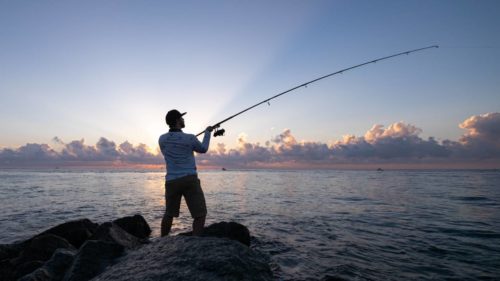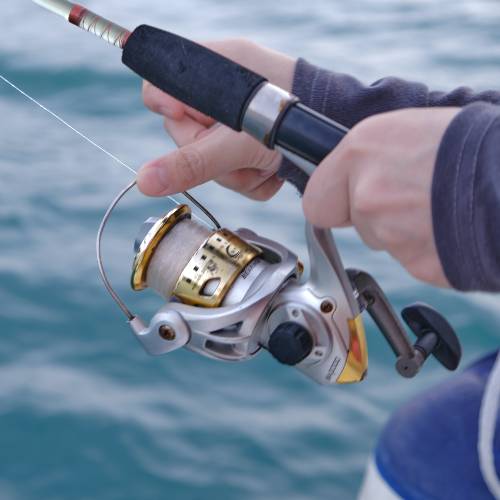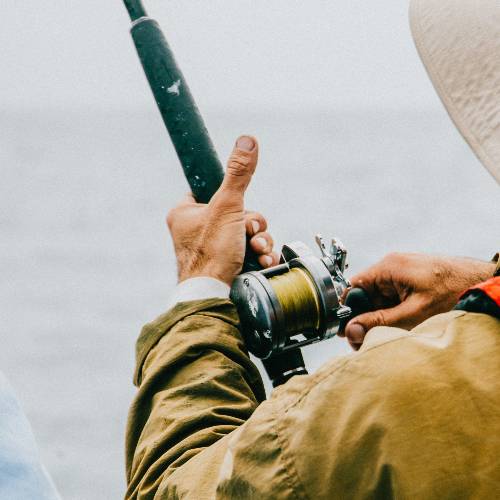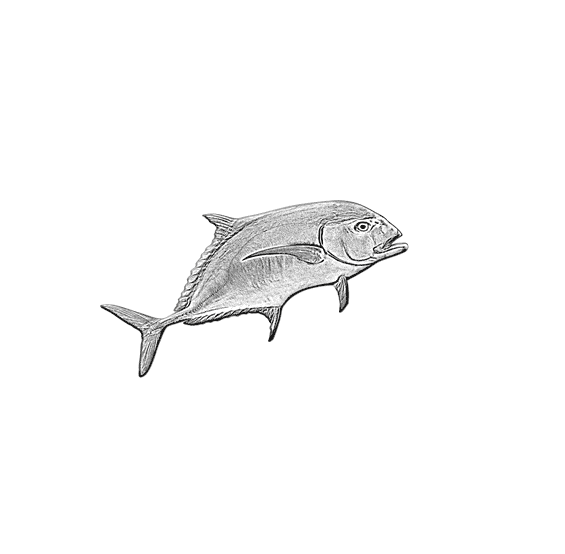How to Cast Spinning and Baitcaster Reels for Novices

See also Best Inshore Spinning Fishing Reels , and Best Surf Fishing Reels .
You’ve got your rod, reel , and lure or bait ready, yet you feel like you aren’t really casting right. It’s all too common, but we’re here to help. Let’s start from the beginning and teach you exactly how to optimally cast a spinning or baitcasting reel.
How to cast spinning and baitcasting reels correctly is the most important and fundamental technique to master in fishing. The term “casting” refers to the act of tossing your fishing line and bait into the water. Casting is not difficult, but it does require some skill and practice to do it perfectly. You want to be able to direct your line to a specific place where the fish will be caught. Casting too close or too far away from your target will destroy your chances of catching a fish.
If you’re a novice angler, or using a new rod, casting should be practiced before going on a fishing excursion to ensure that you are familiar with the rod and technique. You’ll be able to cast your line longer and more accurately as you gain expertise in casting.
Spinning vs. Baitcasting Reels
Depending on the sort of reel you’re using, your casting technique will vary. The most common reels are spinning and baitcasting.
Spinning reels are popular for all forms of fishing, but they are especially well-suited to novice fishermen. They’re simple to use and ideal for catching little fish. For beginner fishermen, closed spin casting reels may be preferable than open spinning reels. They’re inexpensive, simple to care for, and the fishing line is less prone to tangle.
Baitcasting reels are commonly employed to catch big freshwater fish, but they may also be used for saltwater fishing. They’re made for bigger, heavier fish. To learn how to throw using a baitcasting reel, you may need a bit more practice.
When you handle the fishing rod, you’ll sense a change in the reels right away. Spinning reels go on the bottom of the rod, whereas baitcasting reels go on top.
How To Cast with a Spinning Reel:

Although a spinning reel is not the most powerful, it may still catch a decent-sized fish. It’s a fantastic choice for a beginner fisherman because it’s easy to use and the line won’t tangle.
Prepare your rod by securing the bait or lure to it. Use a lighter lure with a spinning reel, especially if you’re a beginning angler.
The Overhead Method of Casting:
1. Holding the rod. Your cast might be affected by how you hold it. Hold the rod in your dominant hand (the one you write with) and the reel between your middle and ring fingers. Place your other hand on the butt of the fishing rod. The reel should be tucked under the rod and held level with your waist.
2. The lure should dangle between 8 and 16 inches below the rod’s tip.
3. Pinch the line with your index fingertip and open the bail. The line will now be able to spool without restriction.
4. Pull the rod back with the tip over your shoulder. After then, swiftly move the rod tip forward and away from your shoulder. You should point it in the direction you wish your lure, or bait to go. Remove your finger from the fishing line as you swing the pole forward. The lure should draw the fishing line away from the reel.
5. Once your line is in the water, shut the bail by turning the reel handle, or closing it manually.
How To Cast with a Baitcasting Reel:

Learning to cast with a baitcasting reel is a bit more difficult, but with a little practice, you’ll be an expert in no time. Because the baitcasting reel is better suited to handle larger species, the steeper learning curve is well worth it.
The Overhead Method of Casting:
1. Just as with the spinning reel, it’s critical to hold the rod correctly. With the reel handle pointed up, the reel should be above the rod. Put your other hand on the fishing rod’s butt and hold the rod in your dominant hand with your thumb on top of it.
2. Reel in the fishing line until the lure is about 10-12 inches away from the rod’s tip.
3. Double-check that the spool tension is right. Setting it to be a free spool is perfect.
4. Place your thumb on the spool of the reel. When casting, you’ll have better control over the line if you angle your thumb on the reel.
5. Release the spool’s release button while keeping your thumb on the spool to prevent the line from unwinding.
6. Raise the rod until the tip is just over your shoulder.
7. Bring the rod forward in a fast motion until it is roughly level with your eye, pointing the rod’s tip at your desired casting spot. Remove your thumb off the spool to allow the fishing line to exit the reel.
8. When the bait or lure reaches the desired location in the water, place your thumb back on the spool to prevent it from moving any further. The line will continue to spool and tangle up on the spool, which is called a backlash, or bird’s nest, if you wait too long.
Longer Distance Casting:
For the greatest results, you may wish to cast further out. Your shadow on the water may startle the fish and keep them away from your bait if you throw too near. If you’re fishing from a boat, the commotion may scare the fish away, so you’ll have a better chance with a longer cast. Finally, the longer your bait is tossed, the deeper it is likely to sink into the water.
How To Cast Further:
1. Make sure you’re using the right fishing rod and reel. You should feel at ease holding and casting it. A rod with a spinning reel is easier to cast if you’re a novice.
2. Use the appropriate baits. Try to match the weight of your lure, or bait and sinker, to your rods specification. Lures with smaller, aerodynamic profiles cast further.
3. Use the wind to your advantage. It’s not a good idea to throw against the wind. Determine which way the wind is blowing and try to keep it at your back or side.
4. Check to see whether you have enough fishing line out to cast.
5. Make sure you’re using the right kind of fishing line. You’ll get the most distance using a braided line.
